Results 2,161 to 2,170 of 12094
Thread: Anandtech News
-
08-31-12, 11:00 AM #2161
Anandtech: Plextor M5 Pro (256GB) Review
Plextor has been making steady progress in becoming a real player in the SSD market. As we saw with the M3 Pro, they have a firmware team capable of delivering top notch performance. The M3 Pro was easily the fastest Marvell 88SS9174 based SSD and overall it was one of the fastest SATA 6Gbps SSDs we ever tested. Plextor is also serious about quality and based on our experience and NewEgg reviews, their SSDs enjoy a good reputation with few issues. 
Today we are looking at the successor of M3 Pro: the M5 Pro. Plextor is the first SSD manufacturer to use Marvell's new 88SS9187 controller, which is paired with Toshiba's brand new 19nm Toggle-Mode MLC NAND. We have been eagerly anticipated the M5 Pro ever since we first heard of it. Plextor did an awesome job with Marvell's 9174, but eventually you will need a faster controller to improve performance, and that's what the M5 Pro is all about. Read on to find out what the M5 Pro has to offer!
 

More...
-
08-31-12, 02:00 PM #2162
Anandtech: Samsung Reveals Additional Details on Series 5 and 7 Slates and Ultrabooks
Along with their ATIV, Smartphone, and Series 9 coverage and their Galaxy Note II, Samsung has released additional details for several upcoming Windows 8 Ultrabooks and Slates. The Series 5 and Series 7 slates (ATIV PCs) are obviously the biggest attention grabbers, as they’re using Intel CPUs to power Windows 8 tablets. There’s some conflicting information on branding, with the slates alternately being called ATIV, but we have the full specs and MSRP now so we thought we’d revisit the topic. Let’s start with the specs table.
Gallery: IFA 2012: Samsung ATIV Smart PC and PC ProProduct Samsung Series 7 Slate (XE700T1C-A01US) Samsung Series 5 Slate (XE500T1C-A01US) Series 5 Ultra (NP540U3C-A01UB) Series 5 Ultra (NP540U3C-A02UB) Size 11.6” 11.6” 13.3” 13.3” Resolution 1920x1080 1366x768 1366x768 1366x768 Touch Screen Capacitive
(10-point multitouch)Capacitive
(10-point multitouch)Capacitive
(10-point multitouch)Capacitive
(10-point multitouch)Dimensions 11.6"x7.2"x0.5"
295x183x12.7mm11.6"x7.2"x0.38"
295x183x9.65mm12.4"x8.6"x0.66"-0.78"
315x218x16.8-19.8mm12.4"x8.6"x0.66"-0.78"
315x218x16.8-19.8mmWeight 1.89 lbs. 1.65 lbs. 3.83 lbs. 3.83 lbs. OS Windows 8 Windows 8 Windows 8 Windows 8 Processor Core i5-3317U Atom Z2760 Core i5-3317U Core i3-3217U RAM 4GB 2GB 4GB 4GB Storage 128GB 64GB 500GB w/ 24GB
ExpressCache500GB w/ 24GB
ExpressCacheNetworking Gigabit LAN (via adapter)
802.11abgn
Bluetooth 4.0Gigabit LAN (via adapter)
802.11abgn
Bluetooth 4.0Gigabit LAN
802.11abgn
Bluetooth 4.0Gigabit LAN
802.11abgn
Bluetooth 4.0MSRP $1199 $749 w/ keyboard
$649 w/o keyboard$849 $799 _thumb.jpg)
_thumb.jpg)
_thumb.jpg)
_thumb.jpg)
_thumb.jpg)
_thumb.jpg)
The Series 5 ATIV PC uses an Atom Z2760 processor/SoC codenamed Clover Trail, which we’ve discussed previously. The short summary is that it’s Cedar Trail but for tablets rather than netbooks/nettops. It appears to be clocked at 1.8GHz with a higher clocked PowerVR SGX 544MP2 GPU. The interesting aspect of such a tablet is that, unlike ARM products running Windows RT, Atom chips are able to run the full backlog of existing x86 software along with all the Metro/Modern/Windows 8 applications. Pricing is obviously quite a bit higher than what you’ll currently pay for an Android tablet (though it’s slightly less than the new 64GB iPad), but the software side of the equation might be enough to get some people to pony up and you can also buy the optional keyboard dock for additional flexibility—note that the keyboard does not include any extra battery capacity.
The Series 7 ATIV PC is priced significantly higher, but it’s essentially a full-blown Ultrabook with the ability to undock the display and use it as a tablet. It comes with a 128GB SSD, 4GB RAM, and a 1080p display, putting it in the same performance category as higher end Ultrabooks. It also comes standard with the keyboard dock, though again the keyboard doesn’t add any additional battery life. We’re obviously going to see a lot more interesting devices like this in the near term, and how successful they end up being will determine whether we see more companies go the hybrid route. It’s certainly an innovative idea, but selling a $1200 hybrid device compared to the $200 to $600 typical tablets might be asking too much—you could buy a $400 tablet and an $800 laptop and end up with two devices that might work better individually instead of a single do-everything device, though there’s certainly a convenience factor in being able to use a single device for both functions.
Gallery: Samsung Series 5 Ultrabooks for Windows 8


Moving on from their ATIV/Slate offerings, Samsung also has a couple new Series 5 Ultrabooks coming out with multitouch screens. The specs are essentially identical with the exception of the CPU; the $799 model will use an i3-3217U (1.8GHz, no Turbo) while the $849 model goes with an i5-3317U (1.7GHz with Turbo up to 2.6GHz). The storage solutions use ExpressCache, similar to the Series 7 Chronos laptop we reviewed, and we haven’t found it to be particularly great in our previous experience; we’d much rather ditch the caching and just get a 128GB SSD as the baseline instead, but obviously there’s a cost factor that Samsung needs to deal with. We don’t have any details on the type of screens used other than the resolution and multitouch capabilities, but given they’re Series 5 we wouldn’t expect high-end LCD panels—those are usually reserved for Series 7 and 9 products. Certainly Microsoft is putting a lot of emphasis on touchscreen interfaces with Windows 8, and for tablets, slates, and smartphones that’s the wave of the future. How that will translate over to laptops and desktop is a different question, but we should have plenty of opportunities to try it out in the near future.

More...
-
08-31-12, 04:30 PM #2163
Anandtech: Sony Xperia Tablet S: A Tablet and Universal Remote Rolled Into One
The Android tablet market is getting decidedly crowded, with dozens of different offerings from big and small companies alike, in sizes from 5” to 13.3”. How do you make your device stand out from the crows when most tablets are running the same OS and variants of the same hardware? Sony hopes to garner increased consumer interest by incorporating remote control and macro functionality with their new Tablet S. Let’s start with the specs first:
The core specs are nothing out of the ordinary; Sony uses the ubiquitous NVIDIA Tegra 3 SoC clocked at 1.3/1.4GHz with a 1280x800 LCD and 16 to 64GB of storage. Pricing is certainly higher than many competing tablets, and the margins on the 32GB and 64GB models are frankly obscene ($5 to $10 of flash memory bumps the price up $100 to $200), but we’ve seen that elsewhere. The Tablet S also has a non-uniform thickness, with a somewhat unusual rounded top edge where the IR remote is located. We pretty much know what to expect from the hardware side of the equation (other than the IR remote), but the software package is where Sony hopes to differentiate.Sony Tablet S SGPT121US/S Specifications Operating System Android 4.0 Processor NVIDIA Tegra 3 Quad-Core Cortex-A9 CPU 1.4GHz
(Maximum 1.4 GHz 1-Core Operation, 1.3GHz Multi-Core Operation)Storage 16GB/32GB/64GB RAM 1GB Display 9.4" (23.8 cm) 1280x800 I/O SD memory card
Headphone
Multi Port
IR remote control w/ macro functionalityNetworking Bluetooth 3.0
802.11a/b/g/nCamera 1Mp Front
8Mp RearBattery ~12 hours video playback
~10 hours Wi-Fi web browsingDimensions 9.45"x6.87"x0.35"~0.47" (WxLxH)
240mmx174.5mmx8.9-11.9mmWeight 1.26 lbs (573g) Pricing $399/$499/$599 (16GB/32GB/64GB)
The IR remote is designed to allow control of most home theater devices, including Blu-ray players, HDTVs, stereos, and cable boxes. Macro functionality allows you to program sequences so that a single button can power on the appropriate devices, select the correct input, and you can quickly “Watch TV” or “Play Blu-ray”. I can’t imagine most people are interested in spending $400+ on a glorified remote, but if you’re already looking to buy a tablet then the extra functionality could be enough to sway you.
Going along with the remote/living room device concept, Sony has a “Watch Now” application that provides an interactive, visual program guide. It will pull information from your personal preferences along with real-time trends from social media feeds, potentially allowing you to discover new shows or learn more about shows you already watch. And of course, Watch Now can integrate with the universal remote to allow you to quickly change the channel to a new show. The Tablet S also supports DLNA for use with compatible PCs, TVs, speakers, etc.
Another software feature Sony touts is their Guest Mode, where you can manage multiple users. Besides allowing different wallpaper for each user, you can customize the applications and widgets available. Such a setup is going to be particularly beneficial for people that want to use the Tablet S as a remote as well as a personal tablet—you wouldn’t want your friends (or you kids’ friends) to start snooping around your email while watching TV, after all.
Rounding out the features are two last items. First, Sony has a “Small Apps” function that allows you to use one application in a small screen while continuing to use another main application. The Small Apps include a calculator, web browser, voice recorder, timer, and the IR remote—we’d like to see some sort of chat or email added to that list. Second, Sony includes a redemption code for three movies via the Google Play movie library (out of a selection of 15 movies), worth up to $45. These are Sony films and are subject to change without notice, but right now it looks like Men In Black II, Moneyball, Anonymous, Battle: Los Angeles, and Friends with Benefits are some of the offerings.
The Sony Tablet S is available for pre-order right now, with shipping scheduled for September 7. Pricing starts at $399 for the 16GB model, though we might see lower retail prices once the tablet shows up in stores. Sony also has several peripherals available for the Tablet S, including a case with keyboard, HDMI adapter, charging cradle, a variety of other cases (sans keyboard), several variations of docking stand, a screen protector, and a slipcase.
Gallery: Sony Xperia Tablet S: A Tablet and Universal Remote Rolled Into One






More...
-
08-31-12, 06:30 PM #2164
Anandtech: Razer Introduces Blade R2: Faster, Less Expensive
_V11b_RGB_WBG_575px.jpg)
Earlier this year, I took a look at Razer’s first foray into gaming systems, the Blade notebook. I came away pretty impressed overall, particularly with the level of design and engineering polish. Considering it was their first notebook product, they got a lot of things right, but there were a few missteps. It was a relative lightweight when it came to performance - with only a dual-core Core i7 and Nvidia GeForce GT 555M graphics, it couldn’t really be considered on the same performance plane as the ASUS RoG and Alienware notebooks, not to mention the powerhouse systems from Clevo. And there were some fundamental issues with the Switchblade UI panel. It was a cool idea, but it was really, really buggy, and though it had the “wow” factor, it didn’t have that much utility even when it wasn’t crashing all over itself. Also, at $2799, the Blade was priced out of the realm of reality. Even so, Blade sales were brisk (their first run sold out in 30 minutes, though no word on volume) and established Razer as a serious hardware manufacturer.
Razer has set about fixing the issues we had, and a year after the original Blade was announced, they’re releasing the second generation Blade. It’s better in every conceivable way - they’ve seriously upped the performance quotient, with a quad-core IVB quad, a GTX 660M, and a 500GB hard drive paired with a 64GB SSD cache. I’m a little bit disappointed by the switch from full SSD storage, but with the size of games these days I completely understand the need for more than 256GB of disk space, and with a cache of 64GB, there’s enough space for Intel’s Smart Response caching tech to store basically everything. The biggest change in addition to the performance is the price drop, to $2499. It’s still not cheap, but when you consider the major performance upgrades, the value proposition is definitely improved.
_V04_RGB_WBG_575px.jpg)
The industrial design has remained predominantly the same, and the gorgeous 17.3” 1080p display is still there, so the parts about the first Blade that we love are for the most part untouched. To fit all of this into the Blade’s 6.4 pound, 0.8” thick frame, Razer needed to redesign the cooling system, and in the press images we can see some definite changes to the lower venting near the rear of the system. Other changes include a third USB 3.0, redesigned mouse buttons, and a Switchblade UI that’s said to be significantly improved. Razer has been rather aggressive in pushing new content and updates to Switchblade, so it’s gotten better in the six months since I had the Blade.
We’re going hands on with it later today at PAX Prime, and I'll update then with hands-on-post.

More...
-
08-31-12, 11:30 PM #2165
Anandtech: Fall Budget System Buyer's Guide
Most of the systems I build for friends and clients are destined to spend their days performing basic computing tasks like checking email and Facebook accounts, shopping for shoes and such, word processing, household finance spreadsheet analysis, Skyping, and so on. Computer hardware capabilities have so far outpaced the requirements of these tasks that many people now do them on their phone.
But when it comes to considerations like a comfortable, ergonomic keyboard and mouse, a larger display, user serviceability and upgradeability, and of course the satisfaction that comes only from DIY, the desktop is still king of the computing hill. In the last few years I've continually marvelled at how much computing power so little money can buy. Read on for our lastest recommendations for building a capable computer on a budget.

More...
-
09-01-12, 12:30 PM #2166
Anandtech: OCZ Agility 4 (256GB) Review
For the last few years, OCZ's consumer SSD lineup has primarily consisted of two models: Vertex and Agility. The history of these two goes all the way back to 2009 when OCZ realized that they can differentiate their SSDs by equipping them with different quality NAND. In first and second generation Vertex and Agility SSDs, the difference between the NAND was the manufacturer and process node. First generation Vertex used strictly Samsung NAND, whereas Agility opened the doors of cheaper prices by using Intel and Toshiba NAND. Back then, Samsung was in control of the SSD and NAND market, which allowed them to price themselves higher than others. With second generation Vertex and Agility, OCZ switched to SandForce's SF-1221 controller and Vertex 2 used Micron NAND, while Agility 2 used Intel NAND. 
The Vertex 3 and Agility 3 finally brought some clearer differences. The difference was no longer the manufacturer, it was the actual NAND interface. 25nm IMFT NAND and ONFi 2.x brought us synchronous logic and transfer speeds of up to 200MB/s. However, manufacturing ONFi 1.0 NAND is cheaper, which is why IMFT has continued to manufacture slower asynchronous NAND. After all, there are many products that don't benefit from the faster interface, such USB 2.0 memory sticks. Once again, OCZ saw that there was a niche for slightly cheaper and slower SSDs with asynchronous NAND. This time around OCZ wasn't the only one, though, as there are numerous other SandForce SSDs with asynchronous NAND (Mushkin Chronos, Corsair Force 3 and Patriot Pyro to name a few). 
With the Vertex 4, OCZ switched to Marvell silicon, rebranded it Indilinx Everest 2 and built their own custom firmware. Vertex 4 used synchronous NAND which meant that there was room for an Agility 4. As expected, a month after the release of Vertex 4 OCZ launched Agility 4 with the same Everest 2 controller but with asynchronous NAND instead. But is asynchronous NAND fast enough for a platform without real-time compression? Read on for the full review of Agility 4!

More...
-
09-01-12, 07:30 PM #2167
Anandtech: HTC Updates International One X and One S to 4.0.4 with HTC Sense 4.1
On August 10th, the HTC One X International (Tegra 3) started getting pushed an update which brought the core Android version to 4.0.4 and also made changes to the task switcher button, similar to what we saw with the AT&T One X earlier in the month. For customers in Europe, that update started rolling out immediately, but it took a while longer for it to hit US customers with the Tegra 3 variant, and we finally got our update push on August 24th, followed by a corresponding update to the International One S on the 25th. 
Gallery: HTC One X and One S 4.0.4 Update and Sense 4.1 Update





Other than updating Android to 4.0.4 and HTC Sense to 4.1 on both platforms, the biggest user experience change is the addition of a menu option which enables users to switch between three functions for the menu button. Users can either leave it how it is and get the task switcher on a press, or choose between long press bringing working like menu, or long press working like task switcher. The appropriate mode also makes the maligned black menu bar with action button go away. 
The HTC One X (Tegra 3) update notes include mention of improved camera and browser performance, the One S (International) update also includes mention of further improved WiFi performance, which again is the WiFi baseband onboard MSM8260A. I included screenshots of the other relevant version details (kernel, baseband, etc) in the gallery above. To test how much browser performance has changed, I ran sunspider on the One X (Tegra 3) again. My previous numbers are from runs on the previous version, to the best of my knowledge. A number of users on twitter asked me to test battery lifetime and see whether it has changed at all. My initial reaction was that if it was substantially improved there would be a note in the brief changelog. Interestingly enough it does seem improved.
I ran the battery life test multiple times to be sure, and that 10% jump is definitely not imagined. Interestingly enough sunspider performance doesn't change at all (we're basically seeing margin of error here) so it's possible HTC was alluding to a performance boost from other previous versions. HTC One X (Tegra 3)   Previous Post Update (2.17.401.2) Battery Life (3G cellular test) 6.987 Hours 7.750 Hours Sunspider (ms, lower is better) 1737.7 ms 1805.5 ms
Either way, it's good to see HTC updating the international platforms of their flagship One X and One S handsets, and hopefully their Android 4.1.x updates are coming shortly as well. This is especially important considering Samsung is already leaking plans for updating the Samsung Galaxy S 3's Android 4.1 Jelly Bean updates. There's also no word on the T-Mobile HTC One S update at this point. 

More...
-
09-02-12, 12:30 PM #2168
Anandtech: Promise Pegasus J2 Review: The Smallest High Performance Thunderbolt Drive
Promise was the first to get us a Thunderbolt chassis with the Pegasus R4/R6. Not only was the Pegasus the first shipping Thunderbolt storage chassis, but it continues to be among the fastest on the market. If you've never seen one, the Pegasus R4/R6 is a 4 or 6 bay 3.5" external storage array with built in RAID and Thunderbolt controllers. Promise doesn't ship a chassis without drives, so you get to choose from between 4TB in the lightest configuration (4 x 1TB drives) at $1050 all the way up to 18TB (6 x 3TB) in the beefiest $3000 config. Sequential IO performance is great, generally hitting around 700MB/s for a 6-drive RAID-5 array. There's room for improvement, but running several drives in RAID-0 is typically not the best idea for redundancy.
The biggest issue with the Pegasus (other than cost) is that it doesn't ship with solid state drives. Although the use of 3.5" mechanical hard drives results in good sequential performance and great capacity, random IO performance suffers. After all, even a single SSD tends to have an order of magnitude better random IO performance than a hard drive. For most Thunderbolt use cases (e.g. tossing video/audio/photo work), the Pegasus' array of hard drives is fine. The world is clearly moving towards solid state storage however, and with LaCie offering an SSD version of its Little Big Disk series of Thunderbolt drives Promise had to respond.
The result is this, the Pegasus J2:
Read on for our full review!
More...
-
09-03-12, 10:00 AM #2169
Anandtech: ASRock X79 Extreme11 Review: PCIe 3.0 x16/x16/x16/x16 and LSI 8-Way SAS/SA
The end of summer marks the start of the X79 refresh line.  We are, at best estimates, coming up to half-way in the Sandy Bridge-E life as the top of the line processor range before Ivy Bridge-E comes to market.  Both chips will be expected to run on X79 and the next chipset.  But in the meantime, manufacturers are coming up with ways to reinvigorate their X79 line up.  So insert ASRock, and the ASRock X79 Extreme11.  This motherboard comes with two PLX PEX 8747 chips, making up to 70 PCIe lanes available.  This are split into 64 for the PCIe slots (x16/x16/x16/x16 capable), and eight are directed to an LSI SAS 2308 PCIe 3.0 chip, which allows RAID 0, 1 and 10 on eight SATA ports, for a peak throughput of up to 4.0 GBps from eight drives in RAID-0.  Read on for the full review.

More...
-
09-03-12, 11:00 PM #2170
Anandtech: The AnandTech Podcast: Episode 3
This week on the AnandTech Podcast we discuss the latest in chip architecture disclosures (both intentional and leaked) from AMD and Intel. Steamroller, Jaguar and Valleyview are all on the table. The crew discusses recent Thunderbolt announcements as well as the big iPhone NFC issue from last week. 
A quick correction to the podcast: Micron's mSATA C400 is currently only available in capacities of up to 256GB, not 512GB as I incorrectly stated. The move to 128Gbit NAND will give us 512GB mSATA drives.
The AnandTech Podcast - Episode 2
featuring Anand Shimpi, Brian Klug & Dr. Ian Cutress
iTunes
RSS - mp3, m4a
Direct Links - mp3, m4a
Total Time: 1 hour 45 minutes
As always, comments are welcome and appreciated. Let us know what you liked, hated and want to hear more of.

More...
Thread Information
Users Browsing this Thread
There are currently 14 users browsing this thread. (0 members and 14 guests)




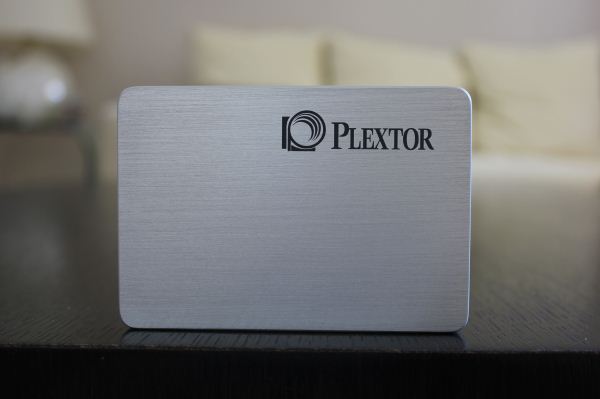



 Quote
Quote
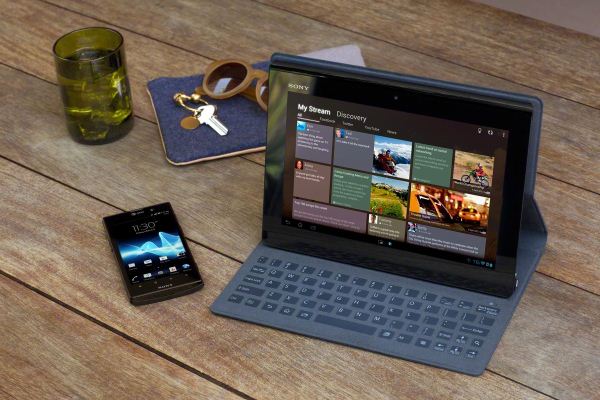

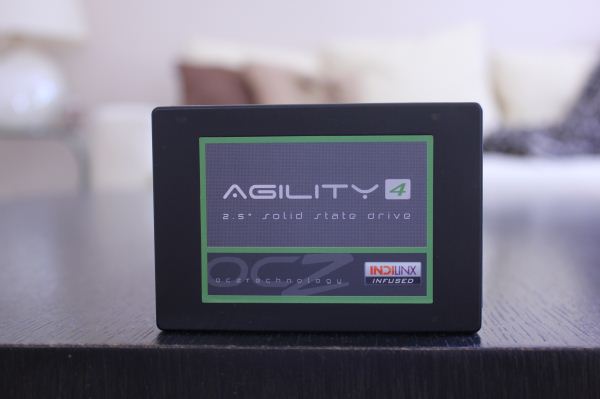




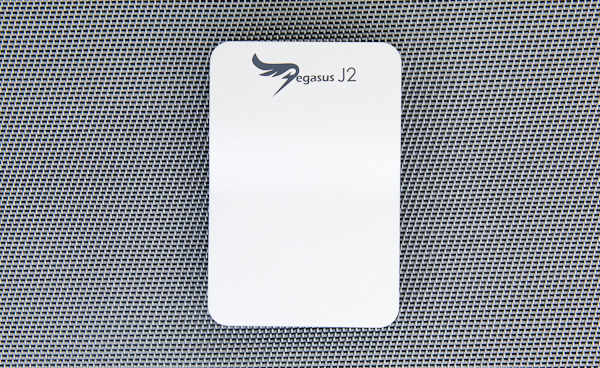
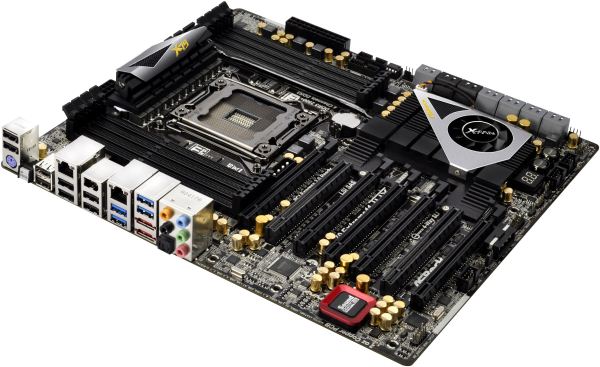

















Bookmarks